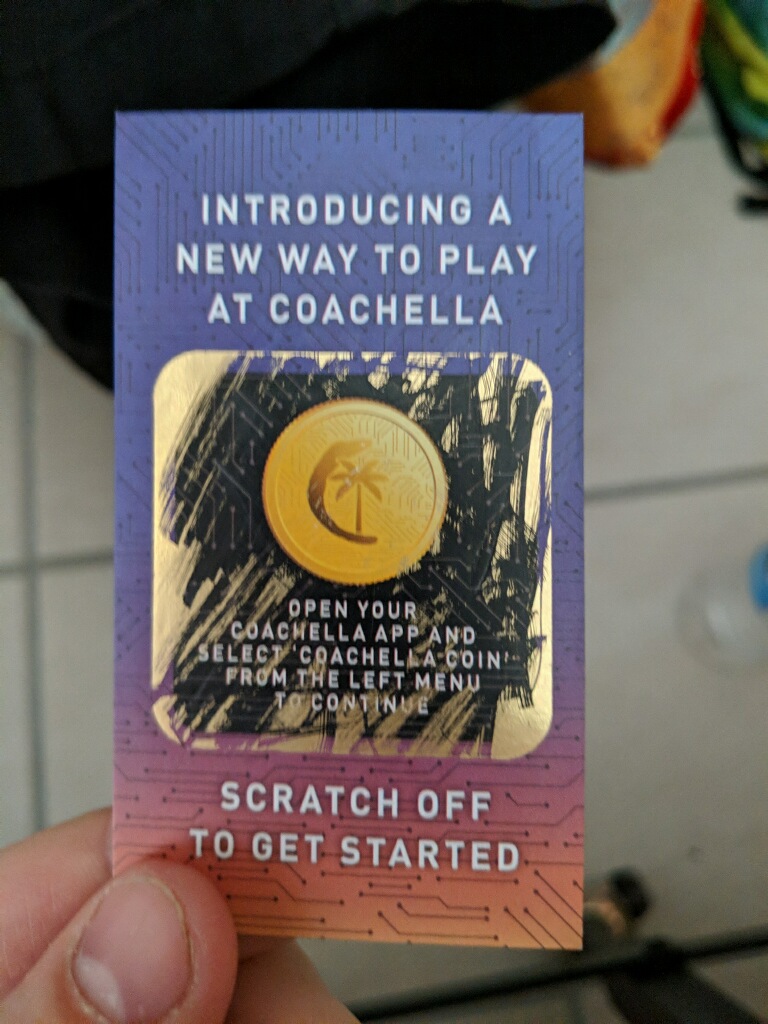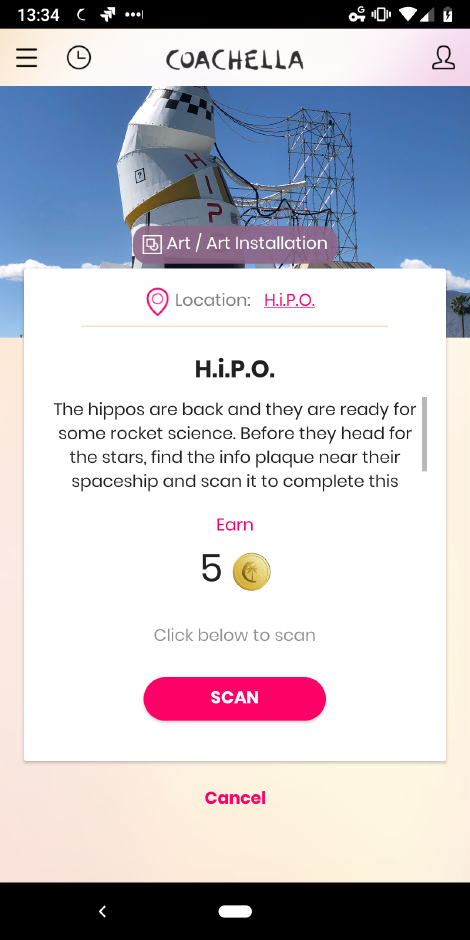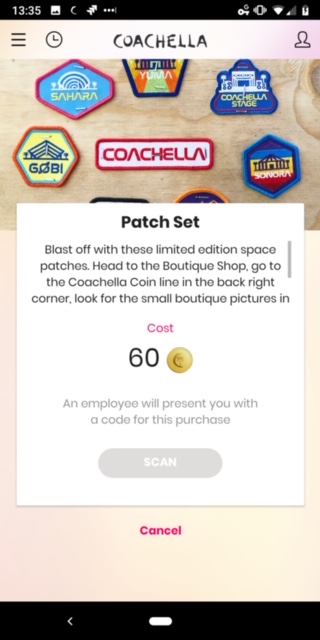Coachella, an annual California-based music festival famous for its Instagram influencers, high-profile set list, and abundant corporate sponsorships, closed out yesterday with headliner Ariana Grande and a surprise appearance by Justin Bieber. Though the performance appeared to get mostly positive reviews, it wasn’t the only highlight as this year’s festival wound down. Some attendees were also finishing up an extremely enthralling blockchain-based game called Coachella Coin.
I did not attend Coachella this year, or any year, but my partner was at the week-long festival and he played this game, which seemed to be about as riveting as collecting frequent flyer miles. In the welcome kit attendees received ahead of the festival, alongside a wristband that allows access to the grounds, there was a scratch card. When attendees scratched off the card, they saw a picture of “Coachella Coin” and were directed to follow up using the Coachella app. The app introduced festivalgoers to a game, in which visiting different locations around the grounds and performing certain activities would give them varying numbers of coins. They could later exchange their coins for modest prizes, like sticker packs.

Upon arriving at locations specified in the game, players would see some kind of placard that they could scan using the Coachella mobile app. A coin would pop up on their screens, augmented reality style, indicating that here in this place, they could get closer to earning their sticker packs.
There were a range of activities players had to complete to earn coins, some more interactive than others. For example, you could earn coins for visiting a specific art installation, or you could earn coins for buying a meal at Shake Shack. The former would get you five coins. The latter would get you 15. If you were serious about earning coins, the message was clear—you’d have to spend money to make “money.”

Nowhere on the Coachella website does it specify which blockchain the game uses, but players were promised “permanent blockchain collectibles from our partner Fanaply after the festival,” suggesting the possibility that the collectibles are tied to Ethereum-based tokens like ERC-20s or ERC-721s. This means the coins could potentially have some monetary value. Coachella did not immediately respond to requests for comment, and neither did Fanaply.
My partner, who attended Coachella this year and played the game, got the biggest singular coin windfall from visiting the festival’s American Express lounge, which he described as a series of green rooms themed for different musical artists. The Coachella Coin game directed him to look for a picture of California, which he found in a section of the lounge called the “Rock Room” (unsure if this pertained to the musical genre or physical rocks). While scanning the image of California, he came across a group of friends who had been sitting in the lounge for a while. They told him that about half the people they saw come through the space were playing the game.
Get the BREAKERMAG newsletter, a twice-weekly roundup of blockchain business and culture.
For scanning that California image in the AmEx lounge, he received 25 coins. (AmEx was Coachella’s payment sponsor this year.)
However, the game wasn’t entirely corporate. Besides being encouraged to visit art installations, players could also participate in tasks like creating “social justice posters,” he tells me. Of the overall game, he says, “I’d say it was a fun way to force me to go see all the art installations, I guess.”
Exposing festivalgoers to blockchain and crypto by rewarding them with prizes for spending fiat money at corporate vendors hardly acknowledges bitcoin’s original promise. And granting players gifts for engaging with a major credit card company doesn’t exactly nod to the possibility of the decentralized, alternative economic system. That being said, one wouldn’t have expected much else from a massive, corporate music festival.

By the time my partner went to cash in his coins mid-afternoon on Saturday, all of the prizes—like the sticker packs and iron-on patches—were sold out, except for a free ticket to ride the Ferris wheel. The prize was moot. I turned out he already had access to a free Ferris wheel ride since he has an American Express Card.